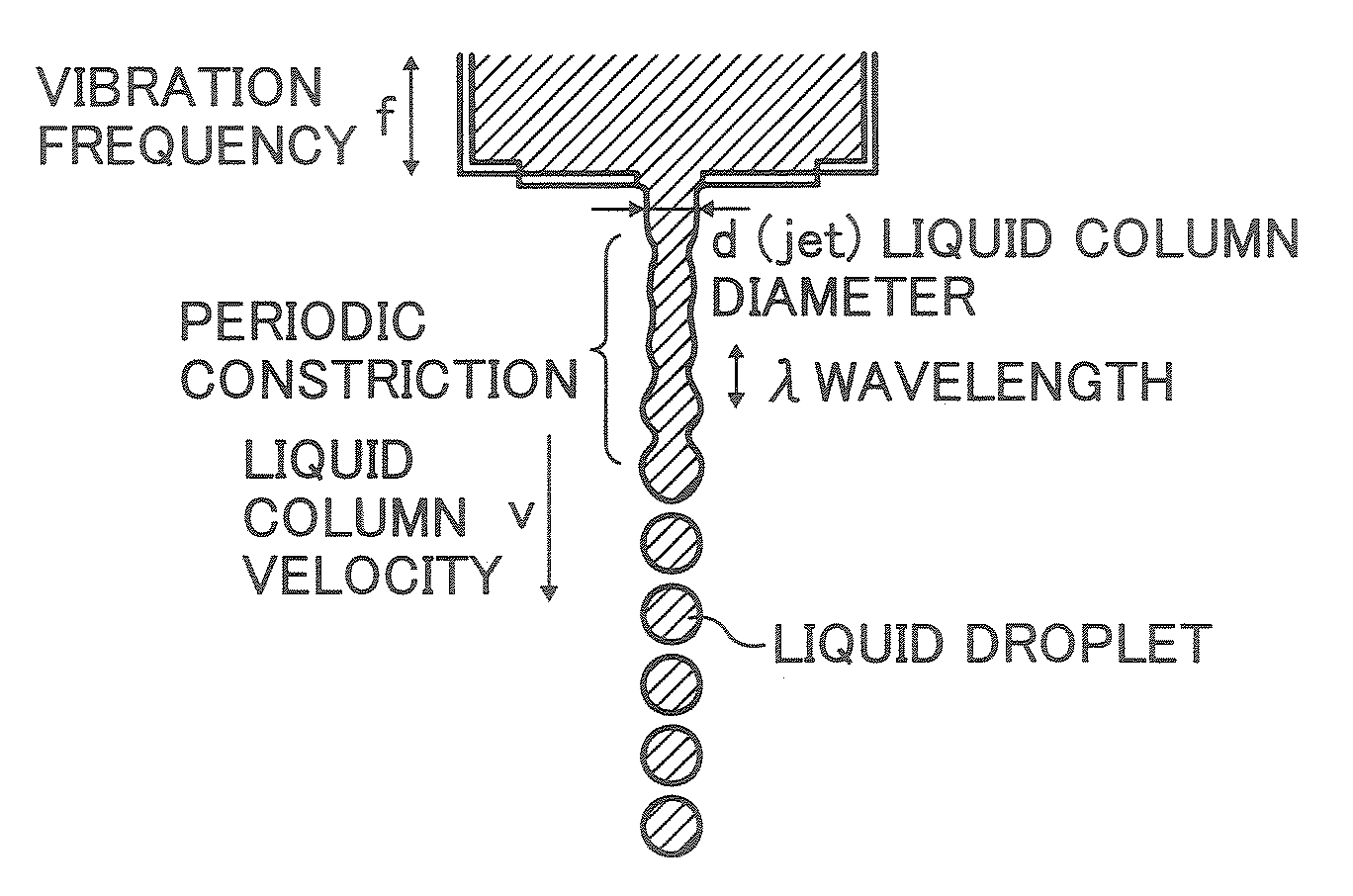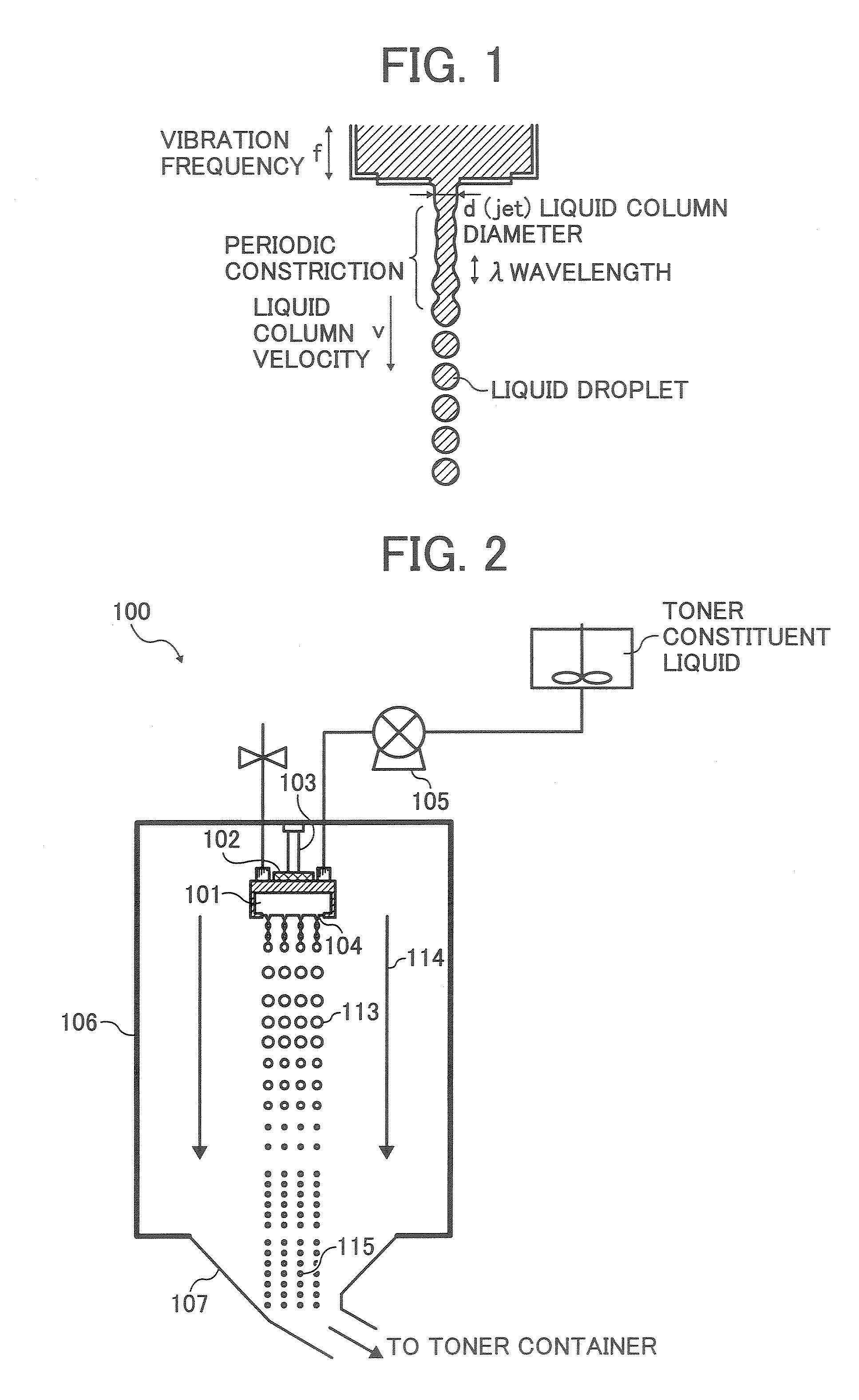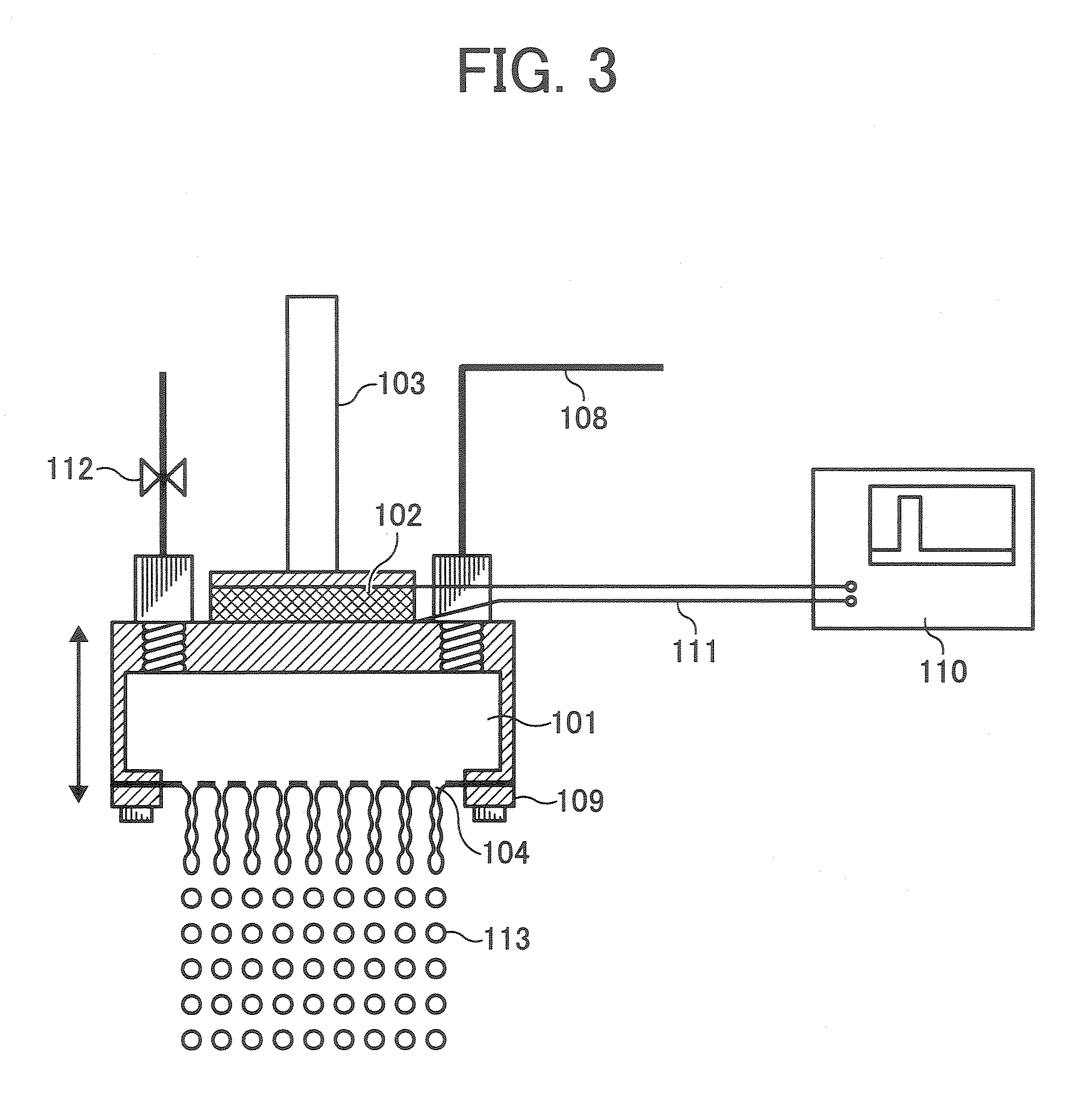Since the polymerized toners are prepared in an
aqueous medium containing a dispersant, the dispersant tends to remain on the surface of the toner and deteriorates chargeability and
environmental stability thereof.
Thus, the polymerized methods are not necessarily satisfactory.
These methods have a
disadvantage that manufacturability of the toner is poor because the number of the droplets discharged per unit time is small.
In addition, it is difficult to prevent each of the droplets from uniting with each other, resulting in broad particle
diameter distribution of the
resultant particles.
Thus, these methods are also not necessarily satisfactory.
However, these methods also have poor manufacturability and the
resultant particles have a wide particle
diameter distribution.
In addition, the cured resins do not impart satisfactory fixability to the
resultant particles.
When the temperature of the heat roller or belt is too high, an offset problem tends to be caused in that excessively melted toner is adhered to the surface of the heat roller or belt.
In contrast, when the temperature of the heat roller or belt is too low, the toner cannot be sufficiently fused and fixed.
In this case, the apparatus needs an
oil tank and an oil applicator, and therefore the apparatus must be larger and complicated.
There is another problem such that the oil applied to the heat member tends to adhere to copier papers and overhead projection (OHP) films, resulting in deterioration of the
color tone of the produced images.
Thereby, the toner particles tend to aggregate, resulting in deterioration of fluidity thereof.
In addition, the
wax tends to form films thereof on a carrier, a photoreceptor, and the like, after a long period of use, and therefore the
image quality deteriorates.
When the toner is a color toner, there is another problem that color reproducibility and transparency deteriorate.
When the domains are too small, the
wax is too excessively dispersed to impart good releasability to the toner.
Although it is necessary to control the dispersion
diameter of the
wax domain, there is no appropriate way.
But it is difficult to apply a proper amount of shearing force to a
polyester resin, which is widely used as a binder resin recently, due to its low
viscosity.
In this case, it is difficult to control the dispersion diameter of the wax domain.
In a pulverized toner, there is another problem that the wax tends to exist at pulverized sections, i.e., the wax tends to exist at the surface of the toner particles.
Therefore, the wax tends to adhere to a photoreceptor and form a film thereof (this phenomena is hereinafter called to as filming problem) when a large amount of the wax is present at the surface of the toner.
Since conventional pulverized toner particles have irregular shapes, the toner particles tend to be excessively pulverized when mixed with a carrier in a developing device (when used for a two-component developer), or when contacting a developing roller, a toner supplying roller, a toner
layer thickness controlling blade, a friction-charging blade, etc. under stress (when used for a one-component developer).
As a result, the resultant
image quality deteriorates because ultrafine particles are produced and a fluidizer is buried in the surfaces of the toner particles.
Since such an irregular-shaped toner has poor fluidity, there is a problem that the toner needs a large amount of a fluidizer.
There is another problem that a toner
bottle must be larger because such an irregular-shaped toner cannot effectively fill up the toner
bottle, resulting in disturbing downsizing of the apparatus.
A full-color transfer process in which a full-color toner image is transferred from a photoreceptor to a transfer medium or a paper is complicated.
On the other hand, a pulverized toner has poor transferability due to its shape.
When the pulverized toner is used for the full-color transfer process, the transferred image may have image defects and a large amount of the toner is consumed so as to compensate the image defects.
In addition, waste toner particles are not produced.
However, these toners do not sufficiently satisfy low-temperature fixability, hot offset resistance, and developability.
However, these toners do not sufficiently satisfy low-temperature fixability, hot offset resistance, developability (chargeability), and durability.
In general, when a
release agent having a low-
melting point is added to a toner, fluidity of the toner deteriorates, and therefore developability, transferability, chargeability, durability, and preservability thereof also deteriorate.
However, these toners have a problem in dispersibility of the wax in the toner.
However, this toner has insufficient developability.
However, the existential condition and location of the wax particles are undefined, and therefore the toner has insufficient separativeness when fixed.
When the wax particles are present on the surface of the toner, fluidity thereof deteriorates, and therefore developability, transferability, chargeability, durability, and preservability also deteriorate.
However, hot offset resistance, preservability, and durability of the toner is not always satisfactory.
Since the
styrene resin does not impart low-temperature fixability to the resultant toner, these toners do not respond to a recent demand for energy saving.
The shape and the
surface structure of the pulverized toner depend on the pulverization property of the materials used and the pulverization condition, and it is difficult to easily control the shape and the
surface structure.
It is also difficult to narrow the particle diameter distribution because there is a limit to improve the classification ability and the manufacturing cost is raised.
It is also difficult for the pulverized toner to have an average particle diameter of not greater than 6 μm considering yield, manufacturability, and cost.
But there is a problem of
nozzle clogging.
In particular, when toner components include coarse particles or aggregations of a
release agent,
nozzle clogging easily occurs.
However, when the toner constituent liquid includes a wax, the holes are easily clogged with the wax, and therefore the resultant toner hardly has a narrow particle diameter distribution.
 Login to View More
Login to View More 


